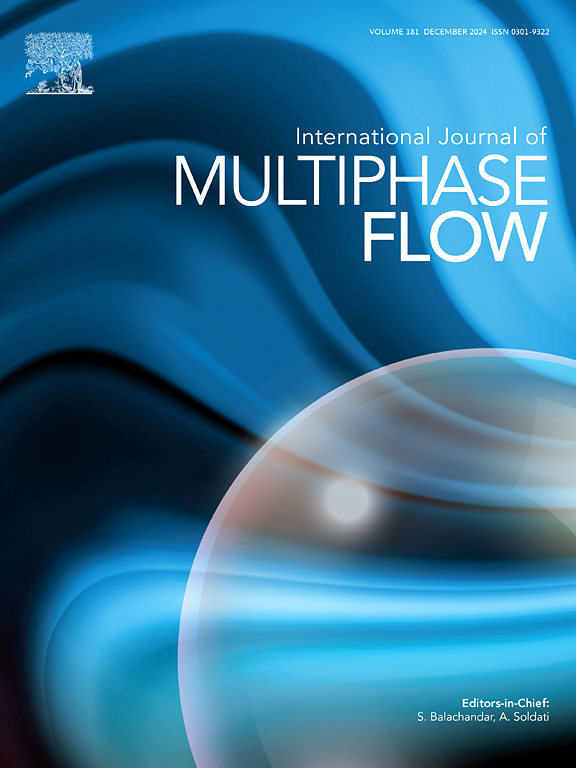Numerical simulation of tip vortex cavitation using a multiscale method
IF 3.6
2区 工程技术
Q1 MECHANICS
International Journal of Multiphase Flow
Pub Date : 2025-02-28
DOI:10.1016/j.ijmultiphaseflow.2025.105183
引用次数: 0
Abstract
We propose a multiscale Euler–Lagrange method to simulate tip vortex cavitation (TVC), accurately modelling bubble dynamics at the macroscopic Eulerian scale. The method employs mapping strategies using a Gaussian kernel function and topological relationships to represent momentum and mass transfer between the Eulerian and Lagrangian frames. We investigate the effects of nuclei content and spatial distribution on TVC inception induced by an elliptical foil, comparing the predicted cavitation inception indices with experimental data, wetted flow simulations, and conventional Euler cavitation simulations. Our results demonstrate that the model yields cavitation inception indices that closely align with experimental observations. Additionally, our simulations reveal a direct correlation between the index and location of TVC inception with both the content and spatial distribution of nuclei. We also examine the temporal evolution of a single nucleus injected at the same position under different cavitation numbers to elucidate the mechanism of TVC inception. We observe two distinct outcomes for nucleus evolution. At higher ambient pressures, only localised elongated cavities move downstream and eventually collapse, a phenomenon not captured by traditional Euler simulations or hybrid Euler–Lagrange methods. When pressure is sufficiently low, a nucleus captured downstream of the minimum pressure location can progress upstream and trigger sustained TVC by connecting to the downstream cavity. This research offers a promising methodology for a deeper understanding of TVC inception and highlights the significant role of nuclei in this process.

叶尖涡空化的多尺度数值模拟
本文提出了一种多尺度欧拉-拉格朗日方法来模拟叶尖涡空化(TVC),在宏观欧拉尺度上准确地模拟了气泡动力学。该方法采用映射策略,利用高斯核函数和拓扑关系来表示欧拉坐标系和拉格朗日坐标系之间的动量和质量传递。本文研究了核含量和空间分布对椭圆箔诱导TVC起始的影响,并将预测的空化起始指数与实验数据、湿流模拟和常规欧拉空化模拟进行了比较。我们的结果表明,该模型产生的空化开始指数与实验观察结果密切一致。此外,我们的模拟还揭示了TVC开始的指数和位置与核的含量和空间分布之间的直接相关性。我们还研究了在不同空化数下注入同一位置的单个核的时间演化,以阐明TVC的起始机制。我们观察到核进化的两种不同结果。在较高的环境压力下,只有局部的细长空腔向下游移动并最终坍塌,这是传统的欧拉模拟或混合欧拉-拉格朗日方法无法捕捉到的现象。当压力足够低时,在最低压力位置下游捕获的核可以向上游移动,并通过连接下游腔体触发持续的TVC。本研究为更深入地了解TVC的开始提供了一种有希望的方法,并强调了核在这一过程中的重要作用。
本文章由计算机程序翻译,如有差异,请以英文原文为准。
求助全文
约1分钟内获得全文
求助全文
来源期刊
CiteScore
7.30
自引率
10.50%
发文量
244
审稿时长
4 months
期刊介绍:
The International Journal of Multiphase Flow publishes analytical, numerical and experimental articles of lasting interest. The scope of the journal includes all aspects of mass, momentum and energy exchange phenomena among different phases such as occur in disperse flows, gas–liquid and liquid–liquid flows, flows in porous media, boiling, granular flows and others.
The journal publishes full papers, brief communications and conference announcements.

 求助内容:
求助内容: 应助结果提醒方式:
应助结果提醒方式:


